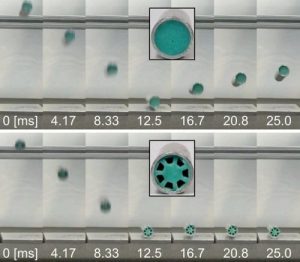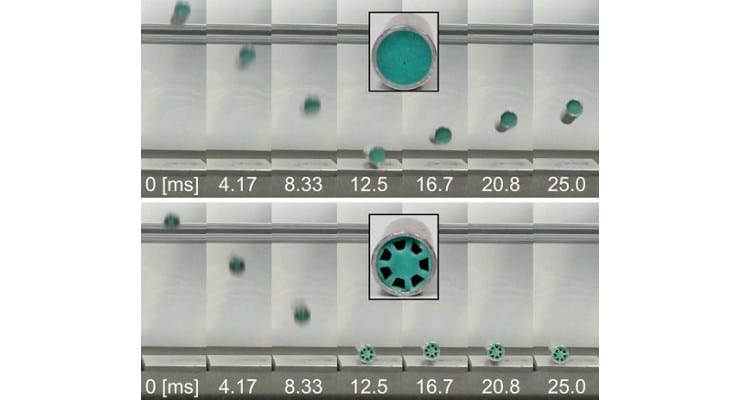 Impact energy can result in extraordinary harm to engineered systems and the delicate objects contained therein. Recent attention on sports- and service-related head injuries has directed significant effort to develop new material systems for helmets with unprecedented impact mitigation capabilities that may serve as models for a wider class of energy-absorbing materials. Beyond head injuries, everyday engineering structures including aircraft, automobiles, and civil infrastructure, to name a few, must be resilient enough to withstand unexpected blast or impact loading without compromising the safety and integrity of occupants and cargo.
Impact energy can result in extraordinary harm to engineered systems and the delicate objects contained therein. Recent attention on sports- and service-related head injuries has directed significant effort to develop new material systems for helmets with unprecedented impact mitigation capabilities that may serve as models for a wider class of energy-absorbing materials. Beyond head injuries, everyday engineering structures including aircraft, automobiles, and civil infrastructure, to name a few, must be resilient enough to withstand unexpected blast or impact loading without compromising the safety and integrity of occupants and cargo.
This research by Ryan L. Harne et al. published in Advanced Engineering Materials advances capabilities for elastomeric materials to absorb impact energy by strategic architectures that are poised near critical points of stability. By the architected of the material systems, mass is removed via void structures which makes the approach lighter in weight than using the conventional bulk elastomer. Compared to shell specimens containing the bulk elastomer, the specimens with architected and constrained materials suppress the impact energy approximately two to three times more while using one-third of the total mass. Verifying experimental trials confirm that material inclusions held closer to the precise critical point cultivate these impact energy absorption capabilities to still-greater extents. The exceptional impact energy absorption performance is repeatable and does not involve plastic deformation of the architected materials, making the concept suitable for reusable protective structures and shock-resilient systems.

















